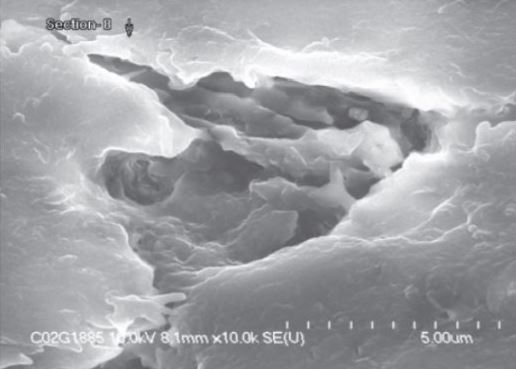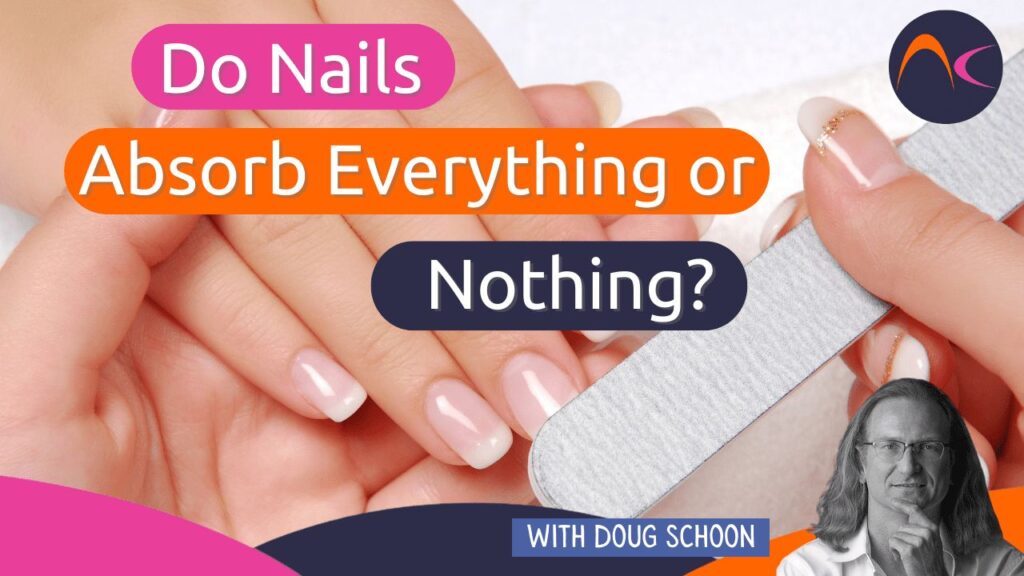A placa ungueal é muito resistente
The nail plate’s upper layer and nail surface are very resistant and prevent most substances from absorbing at all. This is one reason why a healthy natural nail plate is a good barrier. Only water and certain naturally occurring oil-soluble substances such as squalene can penetrate easily through the nail plate.
Substâncias solúveis em óleo ou água
An oil-soluble substance is exactly what it sounds like, substances that will dissolve in certain oils, but most likely will not dissolve in water. Sugar and salt are good examples of water-soluble substances that don’t dissolve in oil. Substances that dissolve in water are called hydrophilic (hy-dro-phil-ic), which means water-loving. “Hydro” means water in ancient Greek and “philic” means loving.
Substances that dissolve in oil are called “lipophilic” (ly-po-phil-ic) which means oil-loving. Lipos is from the ancient Greek word for fat. Lipophilic means fat or oil-loving. So, a lipophilic substance is soluble in oil. Some substances are soluble in both water and oil, but not many fall into that category. Rubbing alcohol is an example of a substance that dissolves in both water and oil.
Poucas substâncias são solúveis em ambos, de fato, essa é considerada uma propriedade incomum. O esqualeno é um componente solúvel em óleo dos óleos naturais de unhas, cabelos e pele. Ele também é encontrado em azeitonas cruas, mas em menor quantidade em azeites de oliva altamente refinados. O processo de refino faz com que o azeite de oliva pareça mais claro e tenha melhor sabor, mas isso remove grande parte do esqualeno do azeite de oliva. O esqualeno é então purificado e vendido como ingrediente cosmético, principalmente para aplicações em cabelos e cuidados com a pele.
Com que rapidez as substâncias se movem através da placa ungueal?
Water is the only substance that moves quickly through the nail plate and it moves much faster through the nail plate than it does through the skin. Oily substances move more slowly through the nail plate than water. Migration of substances through the nail plate occurs only for substances with a chemical structure that mimics the natural oils in the nail plate. Oil concentrations in the plate can increase with each additional topical application. The oil concentration in the nail plate can more than double from a low 3% to 6% or maybe even 7%, with repeated applications. Repeated applications will allow the nail plate to maintain higher levels of oil in the nail plate. One reason is, there are pathways between the nail cells that allow for the passage of oil or water, see the Image below.

Oil and water don’t mix
Since oil and water don’t mix, there are passages that channel water through the plate and other passages dedicated to channeling oily substances through the nail plate. There are probably many more channels for water than oil, but the smaller size of water molecules also helps water to move quicker through the nail plate.
The application of heat can also speed the penetration of oil-soluble substances into the nail plate, which is why hot oil manicures are more effective. Some oily substances have chemical structures that are very different from the natural nail. These types of substances are not compatible with the nail plate’s chemical structure and therefore cannot penetrate at all. Mineral oil and many massage oils cannot penetrate, which is why they are used to provide long-lasting lubrication and slip when applied to the skin. Mineral oil remains on the surface of the prego plate and skin and doesn’t absorb. Any oil or oily substance that won’t penetrate the skin is also unlikely to penetrate nails.
Óleos que penetram na unha natural
Some other well-known examples of oils known for their ability to penetrate the natural nail are jojoba, coconut, and avocado oil.
There are some substances that can penetrate the top surface of the nail plate but can’t move beyond the upper layers of the nail plate and therefore they become trapped inside the plate. Nicotine stains are a good example. Nicotine molecules are shaped like two interconnected rings. Nicotine penetrates the surface of the nail plate, but its bulky shape prevents it from going any deeper. That’s because the plate is such a good barrier and it is highly selective about what substances it allows to absorb. As more and more nicotine builds up near the surface, the stain becomes darker and darker, eventually turning so dark brown, it can appear to be almost as black. If the surface of the nail plate is damaged, some substances will penetrate more easily. But even these will be trapped in the upper layers of the nail plate and not able to penetrate beyond into the middle layers. Of course, if the nail plate is cracked completely through to the nail bed, then great care should be taken.
As substâncias aplicadas sobre esses tipos de rupturas ou rachaduras podem penetrar completamente e obter acesso mais fácil ao leito ungueal abaixo.
A placa ungueal é uma boa barreira para a absorção
This also explains why topical anti-fungal medical treatments don’t work very well. It is very difficult to get enough of the anti-fungal ingredient into the nail plate, even when special penetration enhancers are used. The nail is a powerful barrier. Only water has the ability to easily penetrate the nail. That’s not too surprising. Water is a powerful chemical solvent.
Most don’t think of water in those terms, but that’s exactly what it is. Normally, it is difficult to completely penetrate through the plate. Complete penetration is pretty unlikely to occur with any cosmetic products since most ingredients have no ability to penetrate completely through the nail plate. Even high-quality, penetrating nail oils don’t completely penetrate. These oils build up inside the nail plate and become trapped, which makes them very difficult to remove again, even when hands are washed excessively.
A unha natural é uma barreira poderosa
In short, when asked, if substances penetrate the nail plate, a “yes or no” answer just doesn’t apply. It’s more correct to say, that in general, most substances cannot get past the outer surface of the nail plate, while some substances can penetrate into the upper layers and become trapped and remain there. Only a very few select substances can penetrate through the nail plate. All in all, the natural nail is a powerful barrier that’s not easy to overcome!


